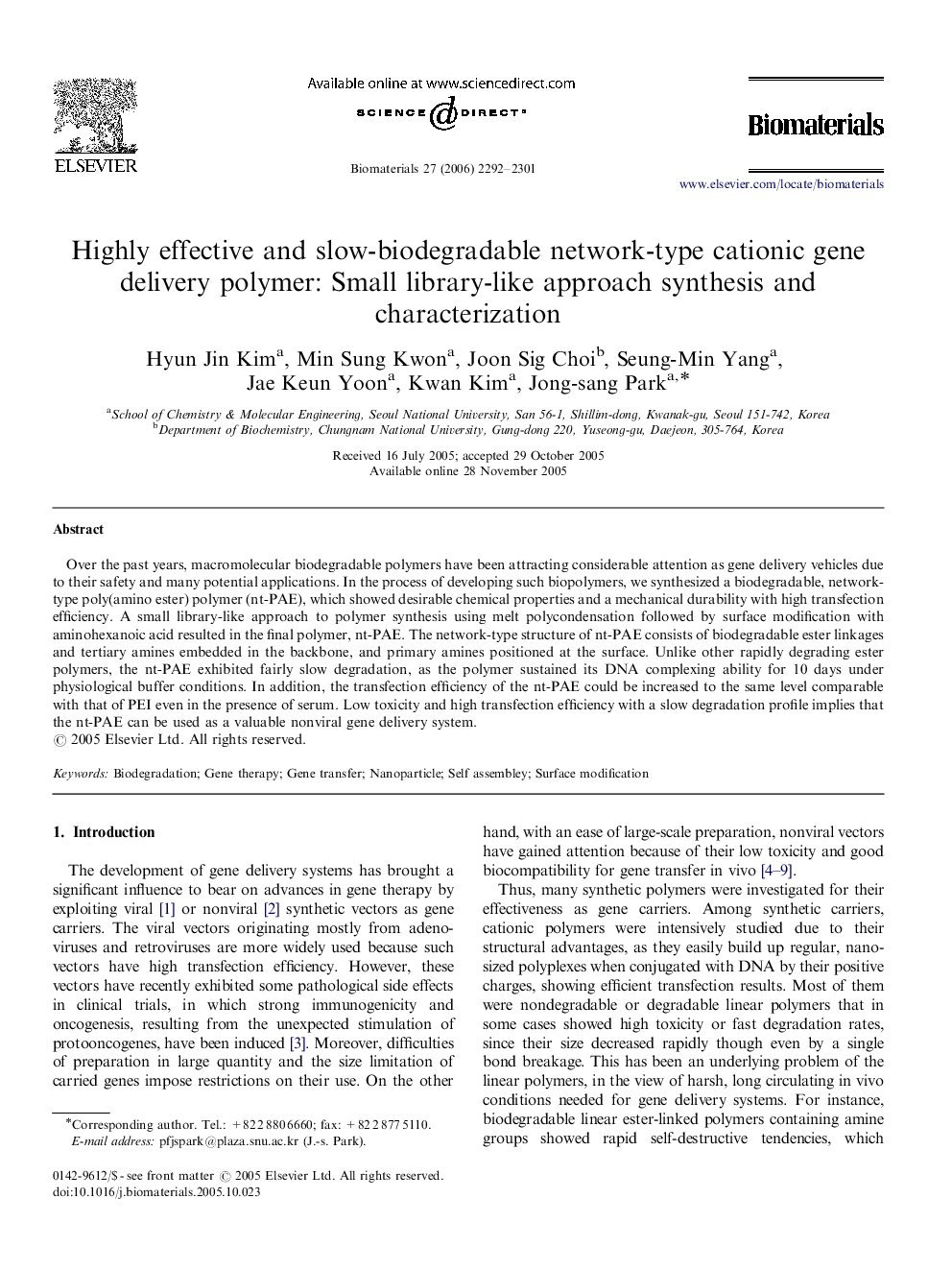| Article ID | Journal | Published Year | Pages | File Type |
|---|---|---|---|---|
| 11623 | Biomaterials | 2006 | 10 Pages |
Over the past years, macromolecular biodegradable polymers have been attracting considerable attention as gene delivery vehicles due to their safety and many potential applications. In the process of developing such biopolymers, we synthesized a biodegradable, network-type poly(amino ester) polymer (nt-PAE), which showed desirable chemical properties and a mechanical durability with high transfection efficiency. A small library-like approach to polymer synthesis using melt polycondensation followed by surface modification with aminohexanoic acid resulted in the final polymer, nt-PAE. The network-type structure of nt-PAE consists of biodegradable ester linkages and tertiary amines embedded in the backbone, and primary amines positioned at the surface. Unlike other rapidly degrading ester polymers, the nt-PAE exhibited fairly slow degradation, as the polymer sustained its DNA complexing ability for 10 days under physiological buffer conditions. In addition, the transfection efficiency of the nt-PAE could be increased to the same level comparable with that of PEI even in the presence of serum. Low toxicity and high transfection efficiency with a slow degradation profile implies that the nt-PAE can be used as a valuable nonviral gene delivery system.
